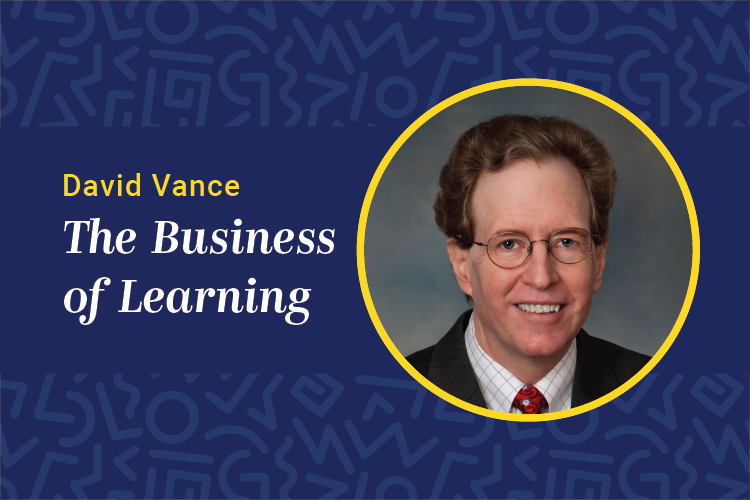Of course you wouldn’t, because learning is interactive and experiential. Reading user guides or documents on a given subject does not, by itself, ensure proficiency, and certainly not expertise. To be proficient, certain experiences must take place in order to build know-how: the know-how to fly a jet, build a house or run a company. If these experiences were not necessary, one would only need encyclopedias of information, or documents, in order to master any topic.
These analogies illustrate the different value propositions of an enterprise content management system (ECM) and a learning content management system (LCMS). Both applications manage content and have the potential to overlap on some areas of basic functionality, but their respective fundamental application focuses today prevent them from being able to do each other’s jobs.
A learning content management application is a specialized content management system built around best practices in instructional design and the delivery of high-impact learning. Instead of delivering user manuals, they serve up dynamic content, created from the ground up for the purpose of making the end-user—the student—learn. LCMS functionality makes the creation, management and delivery of learning possible with features like:
- The ability for multiple authors to contribute content and create various question types, e.g., true/false, multiple-choice, fill-in-the-blank, etc.
- The ability to assess and improve a learner’s knowledge base by analyzing the learner’s responses and prescribing specific learning content based on that analysis.
- Learning-standards compliance, like SCORM and AICC, enabling content to be stored according to structures that will allow the content to be moved between different learning technology tools and infrastructures. This gives organizations the freedom to leverage learning content throughout various parts of their own organizations, as well as for external audiences like partners or customers.
- More granular storage of content than ECM systems enable. LCMSs allow content to be stored in a raw format at very granular levels. The benefit of this granularity is that content can be assembled for individual learners, ensuring that the only content the learners see is the content that they need to learn.
The goals of these three examples of LCMS functionality are simple: capture know-how and create effective learning. Industry analysts tell us that ECM providers currently fall short in all four of these areas:
- “The content management vendors often lack multi-user authoring tools and compliance with SCORM,” according to Gartner, in “When to Consider Smart Enterprise Suites for E-Learning,” June 2003.
- “Currently, ECM platforms are inadequate for handling dedicated learning content, because without customization, dynamically generated content is recognized as a document and not as a reusable learning object. To move into the learning management system market, ECM vendors must support established learning standards (AICC and SCORM) as well as instructional course design, workflow and processes,” according to the META Group, in “Learning Content Management: Part 1,” July 1, 2003.
Clearly, ECM offerings do not qualify as good learning technologies, yet in order to leverage existing ECM investments and avoid investing in new infrastructure technologies for learning, some organizations have considered customizing their ECM system. After all, the application is designed to collect, organize and disseminate content. Unfortunately, this is an impractical solution.
The market assertion around ECM systems is that they are generic content management applications that require customization to meet the needs of each customer and their initiatives. A quick review of the revenue breakdown of the large content management system vendors supports this assertion, with around 50 percent typically devoted to services revenue. The customization undertaken to accommodate the typical content management project will not work for learning (as illustrated earlier, it would fall short of the learning and instructional-design best practices necessary to create great learning). Therefore, supporting a learning initiative would require customizing another version of the ECM system to ensure that the data model addresses learning needs.
This leaves two choices. The first option is to license a new ECM system and fully customize it to meet learning needs. The second is to license a best-in-class application that requires no customization and already meets those needs (which can integrate with any ECM systems to leverage any content that exists and is stored there). If the contrast of these choices is not compelling enough to ease the decision-making process, consider this: Each and every time a new version of the ECM system used for learning is released, the data models must be completely customized again. The services costs begin to outweigh the price of the initial software purchase.
And if this argument is still not compelling enough to sway buyers toward LCMS investments for learning needs, take note of the fact that ECM requires custom integration with any learning management system technology, any learning content authoring tools that are used and any simulation learning applications that are used. Talk about costs and complexity!
Massood Zarrabian joined OutStart as president and CEO in March 2001 with more than 25 years of technology and management experience. Under his leadership, OutStart has grown from a newly funded software company with one product and a handful of customers to a leader in the e-learning applications market with strong revenues and thousands of customers. During his short tenure with OutStart, Massood has overseen three successful acquisitions, most recently of Trainersoft Corp., provider of a leading e-learning authoring tool.














